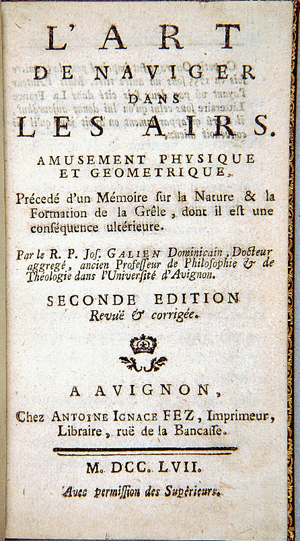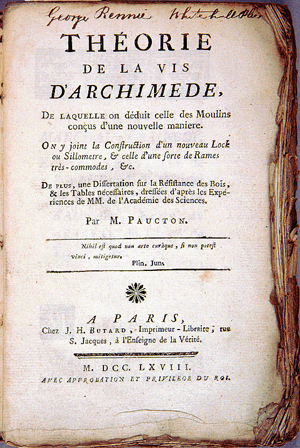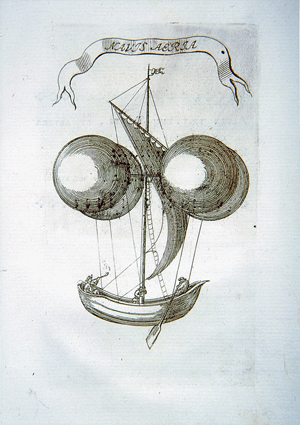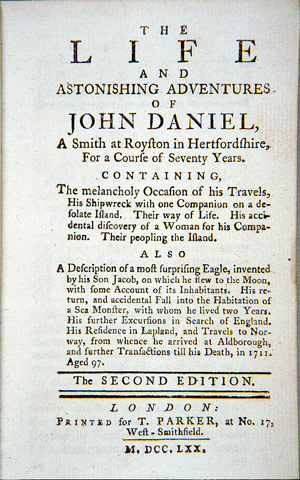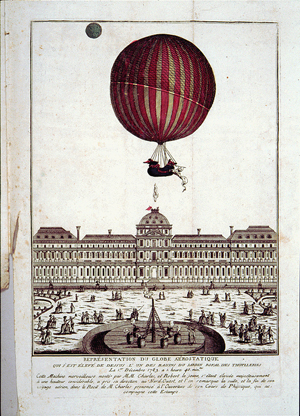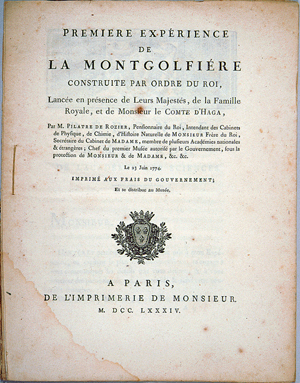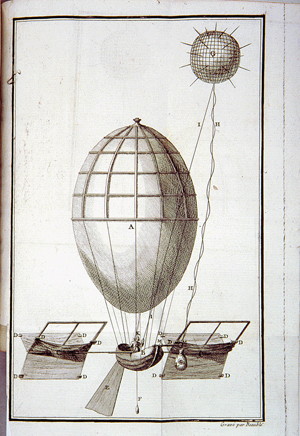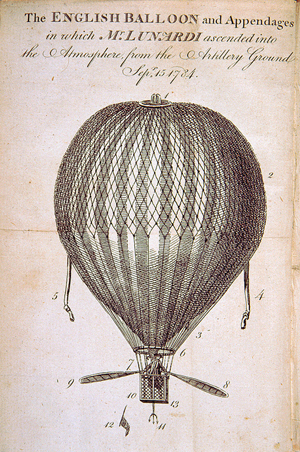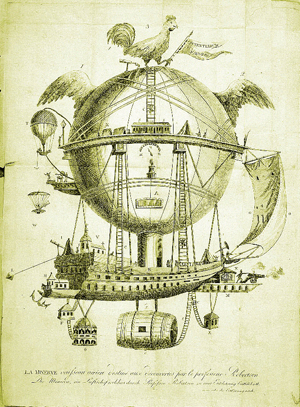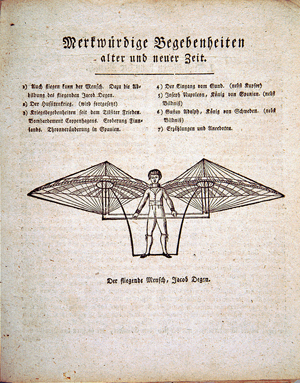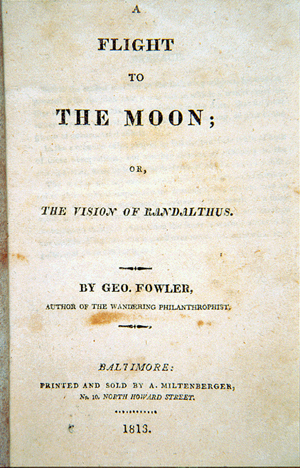This remarkable design for a vast airship is a spin-off from the early interest in the potential value of balloons for scientific investigation. In 1803 the Saint Petersburg Academy of Science arranged to have a series of experiments made at altitude. These included gathering samples of air and measuring magnetic dip. The observations, of doubtful value were made in January 1804 by Robertson, accompanied by Sacharoff, a member of the Academy. The list of items taken on the flight provides an interesting insight into the methods used: chronometer, barometer, thermometer, pigeons, other birds, megaphone, telescopes, firearms, chemicals, quick-lime, gas-jars, money, water, wine, bread, cooked chicken, and other food. (For his first flight in England, Lunardi was also provided with wine, bread, and chicken.) Although styling himself a physicist, Robertson was not altogether dedicated to the sciences but enjoyed playing the role of part-time entertainer.
The Minerve is among the largest balloons ever conceived. A charlière (a hydrogen balloon named after its inventor, physicist J.A.C. Charles) with a diameter of 150 feet, it was designed to carry a load of 161,000 pounds including a company of 60 scientists. As the illustration makes clear, it is imagined as a true flying ship, complete with dinghy, or jolly-boat (in the form of a smaller balloon), an anchor, and ample accommodation for the travelers, study (on the gallery), and a gymnasium (under the prow). The main hull could be used as a conventional ship in the event of a mishap over water. (The proportions of the diagram are not, of course, always worked out.) As the ship is not normally immersed in water, other accommodation and provisions could be slung below. The suspended accommodation at the rear is intended for a small number of female observers, who would be kept apart from the men for fear of distracting them (perhaps a disguise for a brothel). Despite the pointless provision of a log at the rear, Robertson is aware that a technique for directing the horizontal movement of a balloon had not then been developed. The forward sail is intended only to show whether the balloon is rising or descending. The Minerve is neither designed for the benefit of an idyllic society nor intended, as were some earlier imaginary flying machines, to enable mankind to get away from it all. It is equipped with cannons and a strong military presence: outside the church and on the upper equatorial gallery, guards may be seen on duty, one of them standing by a gas-lamp standard—a recent invention.
Named for the goddess of wisdom, the Minerve was intended to make possible scientific study of the whole globe as the vehicle drifted from place to place. Wherever it goes, says Robertson, there will be things of interest. The banner at the top bears the inscription Scientiarum favore: "By the grace of knowledge."
Already to some degree a scientific joke, Robertson's concept was several times parodied by later artists and commentators.

